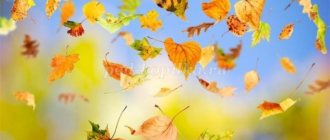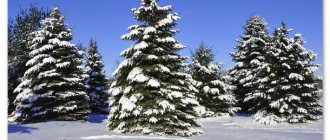The Northern Lights are a glow in the upper layers of the atmosphere, provoked by the collision of charged particles of the solar wind with gas atoms in the upper parts of the air envelope. It is clearly visible in subpolar latitudes. The mysterious polar lights have always aroused the interest of not only residents of northern countries, but also numerous tourists and scientists studying the earth’s atmosphere and magnetosphere. In the article you will learn what the northern lights are, what their nature is and in which area of the globe they are best seen.
What you need to know about the natural phenomenon
The Northern (polar) lights are one of the most interesting and mysterious natural phenomena. Only recently have scientists managed to find out how it appears. Multicolored auroras occur primarily in the upper atmosphere due to the interaction of charged particles with the Earth's magnetic field.
A similar natural phenomenon can be admired at night in high latitudes of both hemispheres. It is classified according to several criteria.
- Depending on the shape, ribbon-like, diffuse, or ray-like glow is distinguished.
- Depending on the intensity, the “lights of the North” can vary from barely visible to bright, colorful.
- The auroras can be divided by color: green, red, red-pink. Most often it is the green glow that can be observed. Less common are purple or blue lights. White light is extremely rare.
During auroras, characteristic clicks, pops and other sounds are often heard. They are of natural origin.
Influence of solar activity
A connection between the northern lights and solar activity was suspected around 1880. Thanks to research since the 1950s, we now know that electrons and protons from the solar wind are captured by Earth's magnetosphere and collide with gases in the atmosphere.
The temperature above the surface of the Sun (we are talking about the corona; the surface of the Sun itself has a temperature of about 6000 degrees) is millions of degrees Celsius. At this temperature, collisions between ions are quite intense. Free electrons and protons are released from the solar atmosphere as a result of the sun's rotation and escape through holes in the magnetic field. In near-Earth space, charged particles are largely deflected by the Earth's magnetic field. The Earth's magnetic field is weakest at the poles and therefore charged particles enter the Earth's atmosphere and collide with gas particles at the poles. These collisions emit light that we perceive as the aurora.
How does the aurora appear?
The Northern Lights are formed by the emission of photons in the upper regions of the earth's atmosphere, at an altitude of 80 km and above. Under the influence of ions, protons, electrons, molecules and atoms of gases (mainly nitrogen and oxygen) transform into an altered state. When an atom or molecule returns to the ground state, a quantum of light is emitted. Different atoms give off different light when they go into an excited or normal state. Thus, oxygen glows green or purple, nitrogen glows blue or red.
Under the influence of a number of factors, the width of the glow can be 160 km. The length of the glow can exceed one and a half thousand kilometers.
The importance of oxygen for the formation of the aurora
Oxygen can go from excited to ground state in just 0.75 seconds. This gas emits a green color for two minutes, after which the hue changes to red. When colliding with other atoms, energy is absorbed, causing the glow to stop.
In the upper layers of the atmosphere the amount of oxygen is less than at the surface. Therefore, the described collisions are rare. This explains the appearance of beautiful red radiation.
As altitude decreases, air density increases. The increase in collisions between atoms contributes to the cessation of the red glow of the atmosphere. Closer to the surface, green rays stop forming.
The role of the solar wind and magnetic field
The Earth constantly interacts with the solar wind - a flow of electrons and positively charged ions. These particles are emitted by the Sun in all directions. Their speed is approximately 400 kilometers per second, the magnetic field voltage is from 2 to 5 nanotesla, and the ion density is approximately 5 per cubic centimeter.
During magnetic disturbances, the flows of charged particles increase significantly. Because of this, the intensity of the interplanetary field increases many times over.
Under the influence of charged particles and the Earth's magnetic field, the Earth's magnetosphere is formed. It deflects these flows by about 70 thousand km. The width of the magnetosphere is about 190 thousand km. On the night side, the plume extends over a greater distance, exceeding 200 Earth radii (more than 1.2 million km).
The plasma flow in the magnetosphere increases with increasing density and turbulence of the solar wind. Magnetospheric plasma flows collide with the magnetic field of our planet perpendicularly. Individual plasma flows move along magnetic field lines and gradually lose energy. This contributes to the glow of the atmosphere.
How are auroras formed?
Impact of solar activity
The connection between the northern lights and solar activity was noticed back in the 80s. 19th century. Further research showed that charged particles of the solar wind are intercepted by the earth's magnetosphere and collide with gas molecules.
The temperature of the solar corona reaches several million degrees. In this case, various collisions between ions occur. Free charged particles escape from the Sun's atmosphere at high speed and escape. In space near the Earth, these particles are deflected by a magnetic field.
The Earth's magnetic field is weakest at the poles and in the circumpolar zone. Because of this, charged particles penetrate the atmosphere and collide at high latitudes. Collisions contribute to the formation of light quanta, which we see as the aurora.
Solar wind and magnetosphere
The Earth is constantly immersed in the solar wind, a tenuous stream of hot plasma (a gas of free electrons and positive ions) emitted by the Sun in all directions, which is generated by the two million degrees of heat of the Solar Corona.
The solar wind typically reaches the Earth at a speed of about 400 km/s, a density of about 5 ions/cm3 and a magnetic field strength of 2-5 nT (Earth's magnetic field strength is measured in Tesla and at the Earth's surface it is typically 30,000- 50,000 nT). During magnetic storms, solar plasma flows can be several times faster and the interplanetary magnetic field (IMF) can be much stronger.
The interplanetary magnetic field is formed on the Sun, in the region of sunspots, and the solar wind extends into space along its field lines.
Types of Northern Lights
To assess the type of glow, scientists most often use the terms “diffuse” and “spot” glow.
Diffuse
This is a “calm” glow without clear boundaries, in the form of spots or a veil. The luminous elements may look like moonlit clouds. Sometimes diffuse light can take up most of the sky. In some cases, night lights may not be visible.
Diffuse aurora
Spot Shine
Point auroras vary in brightness - from barely noticeable to bright. Such aurora can only be seen in the dead of night.
Spot aurora
alla_fedina.jpg
Photo: Alla Fedina
The first person to note this phenomenon from a medical point of view was the British doctor Watson. He participated in several polar expeditions at the very beginning of the twentieth century. The scientist described people falling into a strange state, who began to make rhythmic, consistent movements and moved towards the north. Any attempts to restrain them led to active resistance. Watson called this condition expeditionary or polar rabies.
Earlier, the famous polar explorer Amundsen encountered this strange phenomenon. He was the navigator of the Belzhik ship, which was wintering off the coast of Antarctica. Several members of the expedition “heard” the call of the North Star. One of them even escaped from the ship into the snowy expanses, and the other tried to kill Amundsen with an ax.
Doctors who took part in polar expeditions discovered a pattern: almost all cases of polar rabies coincided with the activity of the aurora. The most terrible ones coincided with flashes of red color. The number of such attacks of expeditionary rabies increased significantly in years with recorded peaks of solar activity, when the brightest auroras occurred.
Best time and place to watch the aurora
Auroras are visible in both the Northern and Southern Hemispheres, in the form of an irregular oval. Its center is located above the magnetic pole. Interestingly, the polar lights at the South Pole are a mirror image of the same phenomenon at the North Pole. Zones that favor maximum visibility of auroras are called auroral ovals. They are located between 67 – 70 degrees latitude. During the period of maximum solar activity, the oval in the north and south expands significantly, and the atmospheric glow is visible at lower latitudes - down to 45 degrees and even lower.
The aurora in Antarctica is visible in the same way as in the Arctic.
Polar lights in Antarctica
The most convenient place for observing the northern lights is the areas of the globe located north or south of the corresponding polar circles. Also, the northern lights are visible to observers in southern Greenland. The Southern Lights are visible around Antarctica.
This natural phenomenon is cyclical. Its intensity coincides with the solar activity cycle. The highest probability of seeing atmospheric glow is in winter. This is facilitated by short daylight hours and long nights. The best visibility of the auroras is around midnight.
The aurora occurs in any season. Its appearance depends on the intensity of solar storms.
aleksandr_stepanchenko_2.jpg
Photo: Alexander Stepanenko
How to Photograph the Northern Lights
- You need a tripod to securely hold the camera while taking pictures.
- Please be patient as the northern lights do not light up on schedule. Dress warmly and take a thermos with a warm drink.
- While waiting for the aurora, it is better to keep your camera in a case or under your clothes.
- Shooting must be done with the focus set to infinity (landscape mode).
- And - the most important thing - you need to set the shutter speed to at least 15 seconds. Otherwise, the pictures will turn out dark, and the shine will be invisible.
By the way, now the Russian Geographical Society continues to accept photographs for the V photo competition “The Most Beautiful Country”. Perhaps the winner will be a photo of the aurora. Details here.
What do sirens have to do with it?
Northern people noticed: the aurora takes away the mind. Russian Pomors even introduced the concept of “measuring”. It refers to an unusual mental illness that occurs in several people at the same time. The Eskimos call this the “call of the North Star.”
Sounds generated by auroras
Sometimes the aurora can generate sounds like popping or crackling sounds. For a long time, scientists questioned the realism of such sounds: they were difficult to record and describe scientifically. However, Finnish researchers managed to record the sounds made by the northern lights.
Astronomers also claim that the sounds are formed at an altitude of approximately 70 meters above the Earth's surface. They are formed as a result of the interaction of ions and electrons with atoms of atmospheric gases.
Astronomers at the University of Alaska who study auroras note that sounds from auroras are extremely rare. Very few people ever get to hear them. Such sounds can only appear during years of highest solar activity. To observe them, the night must be clear and windless, and there should be no sources of noise nearby.
518892.jpg
Photo: Alexander Merkushev
“In the Murmansk region, official statistics on the number of tourists are very different from the real figures,” says Vladimir Onatsky. – Hotels for this season are booked six months to a year in advance. The real numbers are five times higher. Many come as savages and rent housing from local residents. They travel to popular places on their own.” It is also impossible to track through travel companies. The number of illegal guides has increased over the past two or three years. Even taxi drivers promise to show you the best northern lights. True, they do not guarantee results. Honest Arctic guides take their guests until they manage to catch the fiery fox by the tail.
According to Vladimir, he works mainly with Russians. Many of them come again - with their family, colleagues, friends. He believes it is extremely important when customers are satisfied and a pleasant impression is left about the region. And recently on the Kola Peninsula, the tourism business followed demand: they began to build glass igloos - both the sky is visible and it is warm.
What affects the brightness and shades of the northern lights
The color of the atmospheric glow depends on gas molecules colliding with solar wind particles.
- The green color arises as a result of radiation from atomic oxygen at an altitude of 80 to 150 km, and less commonly from nitrogen molecules.
- The red color is the result of radiation from nitrogen molecules, oxygen atoms at altitudes of 150 to 400 km, and to a small extent, hydrogen atoms.
- The yellow tint appears as a result of the ionization process of oxygen, as well as a combination of red and green light.
- The blue color results from the emission of nitrogen atoms at altitudes between 140 and 160 km. This phenomenon is relatively rare.
- The violet color occurs as a result of the emission of nitrogen molecules at altitudes less than 120 km.
- The pink tint comes from mixing red and green.
The intensity of the glow depends on the activity of the Sun. It is assessed on the following scale.
- 1 point has a glow close in brightness to the Milky Way.
- 2 points - this is the light emanating from the Moon, covered by cirrus clouds.
- 3 points - this is a glow similar in brightness to the light of the Moon hidden by cumulus clouds.
- The highest brightness is equal to the light of the full Moon visible on a clear night.
sergey_barkov.jpg
Photo: Sergey Barkov
Officially
The Russian Association of Tour Operators reported an increase in demand for winter tours to Russia. The main volume of tourist traffic in Russia in winter comes from countries in Asia and Europe. According to experts, in the winter season Russia will receive mainly tourists from China (about 80 thousand), South Korea (about 20 thousand), Israel (about 15 thousand), Germany (15 thousand), France (about 10 thousand), from Italy, Thailand, Turkey - 6-8 thousand people each in January - February.
Foreign tourists choose Moscow, St. Petersburg and the Trans-Siberian Railway. And if some of them go to plunge into the New Year's fairy tale in the capital, then the rest are attracted by the northern lights. On the territory of our country, this phenomenon can be observed in almost the entire North. Every year the number of viewers of the natural light show grows by about 20%. Most of these tours are sold to Murmansk and Karelia.
The project “Travel with the Russian Geographical Society” offers three seasonal tours in which you can see the northern lights: to the Arkhangelsk region, Chukotka and Karelia.
Artificial Northern Lights
After the US Department of Defense experimented with nuclear explosions in the late 1950s. an atmospheric glow similar to polar light appeared. These tests were carried out to study the Earth's magnetic field.
A glow in the form of a crimson arc was noticed in early August 1958 in Hawaii and in the waters of the island. Apia after nuclear explosions at an altitude of 400 km above the Earth's surface. A similar phenomenon was noticed in the early autumn of the same year in the Atlantic Ocean after nuclear explosions carried out during Operation Argus. The explosions occurred at an altitude of hundreds of kilometers above the Earth's surface. At the same time, a red glow was noticed in the Azores.
Aurora formed as a result of the explosion of a nuclear warhead
Experiments carried out show that nuclear explosions carried out at an altitude of several tens of kilometers above the earth's surface led to disturbances in the magnetic field and caused a flow of charged particles. Artificial auroras were provoked by streams of electrons that were formed at the moment of an atomic explosion after beta decay.
Electrons, moving tangentially to the earth's magnetic field, colliding with oxygen and nitrogen molecules, caused a glow in the upper atmospheric layers. This mechanism allowed scientists to understand how auroras are formed.
The glow in the upper atmosphere may be caused by emissions of sodium and potassium from rocket engines. This is an artificial aurora, unlike the aurora of the same origin.
Finding the Arctic on the map
First of all, we need to understand where we are going. Therefore, we take out a geographical map and look where our destination is. The map can be hung on the wall so that it is always visible. But we prefer to spread the map on the floor and move their favorite toys on it on their ship books.
Reaching the North Pole on the map, we simultaneously name the oceans through which we sail and other places that are already familiar to us.
It will be great if you find the Arctic not only on the map, but also on the globe. I discovered that after my daughter had gotten her bearings a little on the map and could show all the continents and the approximate location of our city, she was completely lost on the globe and refused to recognize seemingly familiar continents on it. Therefore, it is useful to study the globe in parallel with the map, in addition, this will form in the child the idea of the Earth as a ball.
History of the study
For a long time, scientists could not find out why the northern lights appear. One of the first observations of the aurora in history was documented by James Cook. At the same time, scientists learned that a colorful natural phenomenon can be observed at two poles simultaneously.
At that time, the following hypotheses were expressed regarding the appearance of the northern lights:
- the heavenly glow arises as a result of the rotting of fish that washed up on the coast from the depths of the sea;
- The northern lights appear if some “zodiacal matter” penetrates the upper layers of the atmosphere.
The most truthful hypothesis was proposed by the English astronomer Edmund Halley. He assumed that the glow of the atmosphere was caused by some kind of “magnetic fluid”.
The first who was able to scientifically explain the origin of the aurora was the outstanding Russian scientist Mikhail Lomonosov. Through scientific experiments in the laboratory, he recreated the processes that occur in the atmosphere. The scientist pumped air out of a glass ball and passed electricity through it. Lights appeared in it that resembled those that appear in the sky. The scientist was also able to prove that each type of gas produces a glow of a different color.
Scientists from NASA managed to reproduce the aurora in the laboratory
This theory was further developed, and scientists soon established that the northern lights are of an electrical nature. A connection has also been established between the frequency of this natural phenomenon and magnetic storms.
Thanks to the development of modern physics and space technology, the most accurate definition of the natural phenomenon in question was given.
aleksandr_merkushev_10.jpg
Photo: Alexander Merkushev
The Brain Institute appeared in Petrograd in 1918. It was headed by Academician Bekhterev. The scientist showed interest in mental illnesses manifested in polar regions. Bekhterev organized a scientific expedition to the Kola Peninsula, but to no avail. In 1957, Soviet scientists returned to this research. After experiments, they found out: certain forms of auroras pulsate with a frequency that is close to the basic rhythms of the human brain, which causes a kind of malfunction in its work. And bright flashes of scarlet color coincide with a frequency close to the rhythms of the brain. They cause exacerbation of chronic diseases and seizures similar to epileptic ones. Other experimental subjects, under the influence of such outbreaks, developed headaches and malfunctions of the vestibular apparatus. People prone to mental illness are especially susceptible to this type of influence.
The frequency of their radiation is 8-13 hertz, which corresponds to the frequency of the beta and alpha rhythms of the human brain. A person observing the aurora feels an inexplicable need to become one with something majestic. The aurora is accompanied by active infrasound, which is not perceptible to the ear. Infrasound is unpredictable: it is unknown what changes occur in the human brain and cardiovascular system. Therefore, to witness the northern lights means exposing yourself to an unknown danger to the body.
Infrasound is the cause of many tragedies that occur at sea. Minor exposure to infrasound results in seasickness, moderate exposure causes disruption of brain function, sometimes to the point of loss of vision and hearing. It is believed that infrasound of 7 hertz is lethal to humans. Death occurs due to vibration of internal organs, which leads to cardiac arrest. Scientists believe that legends about sea sirens beckoning sailors are directly related to the aurora.







